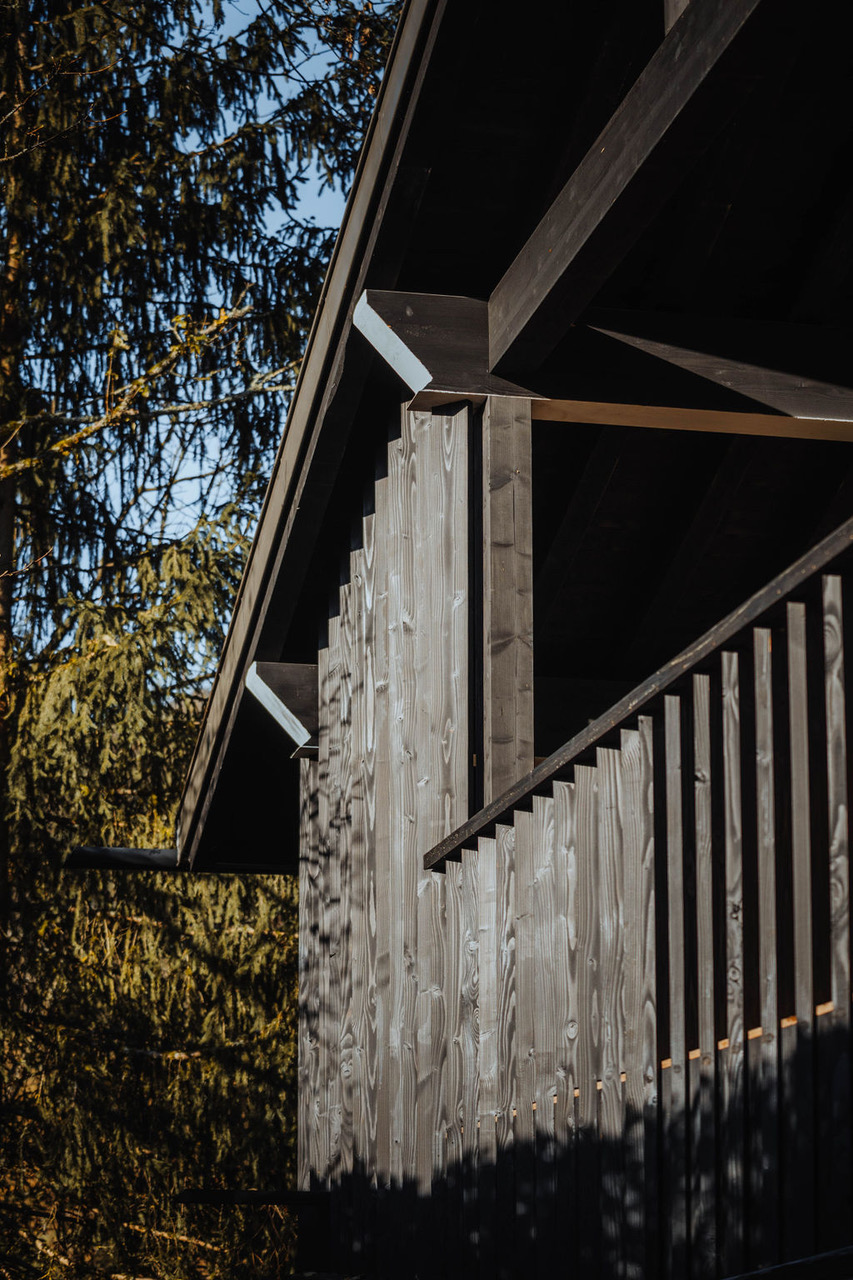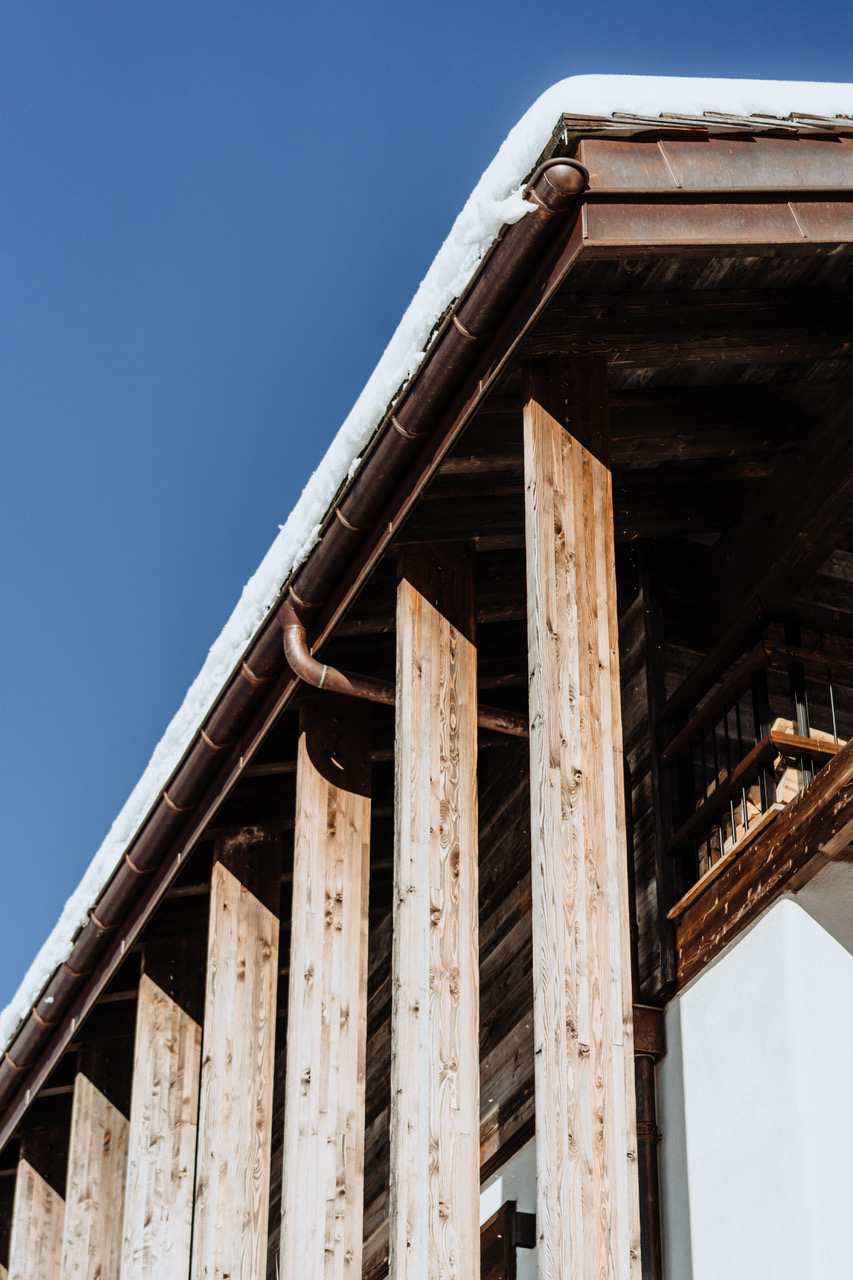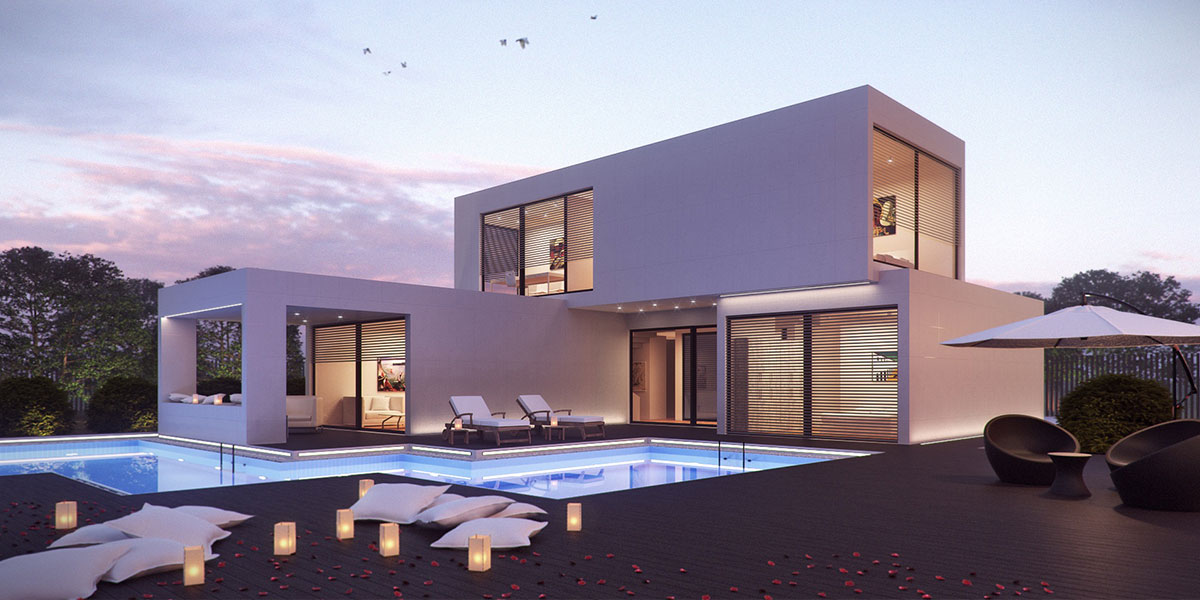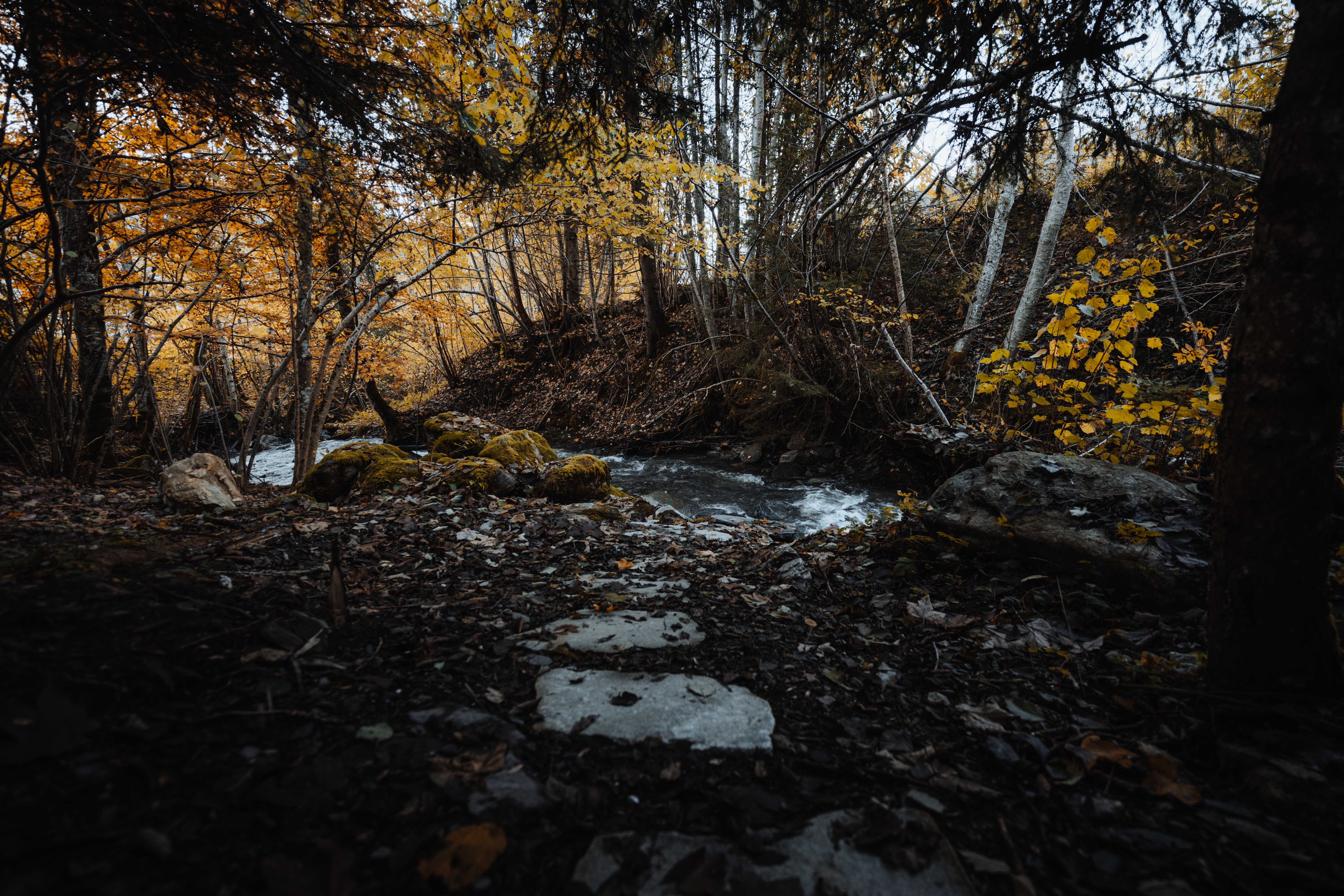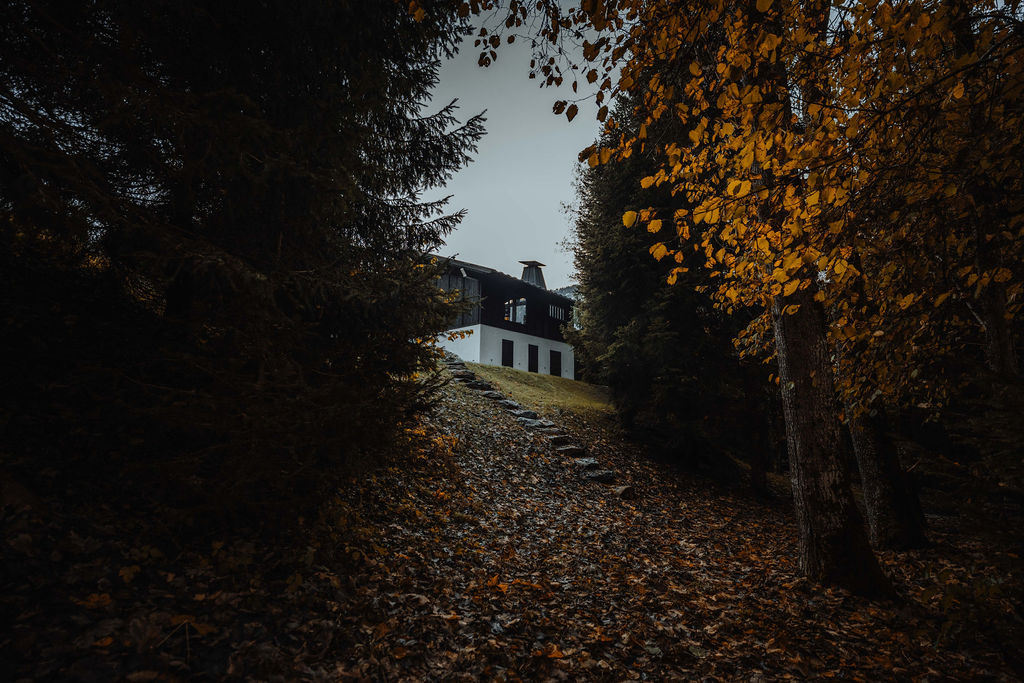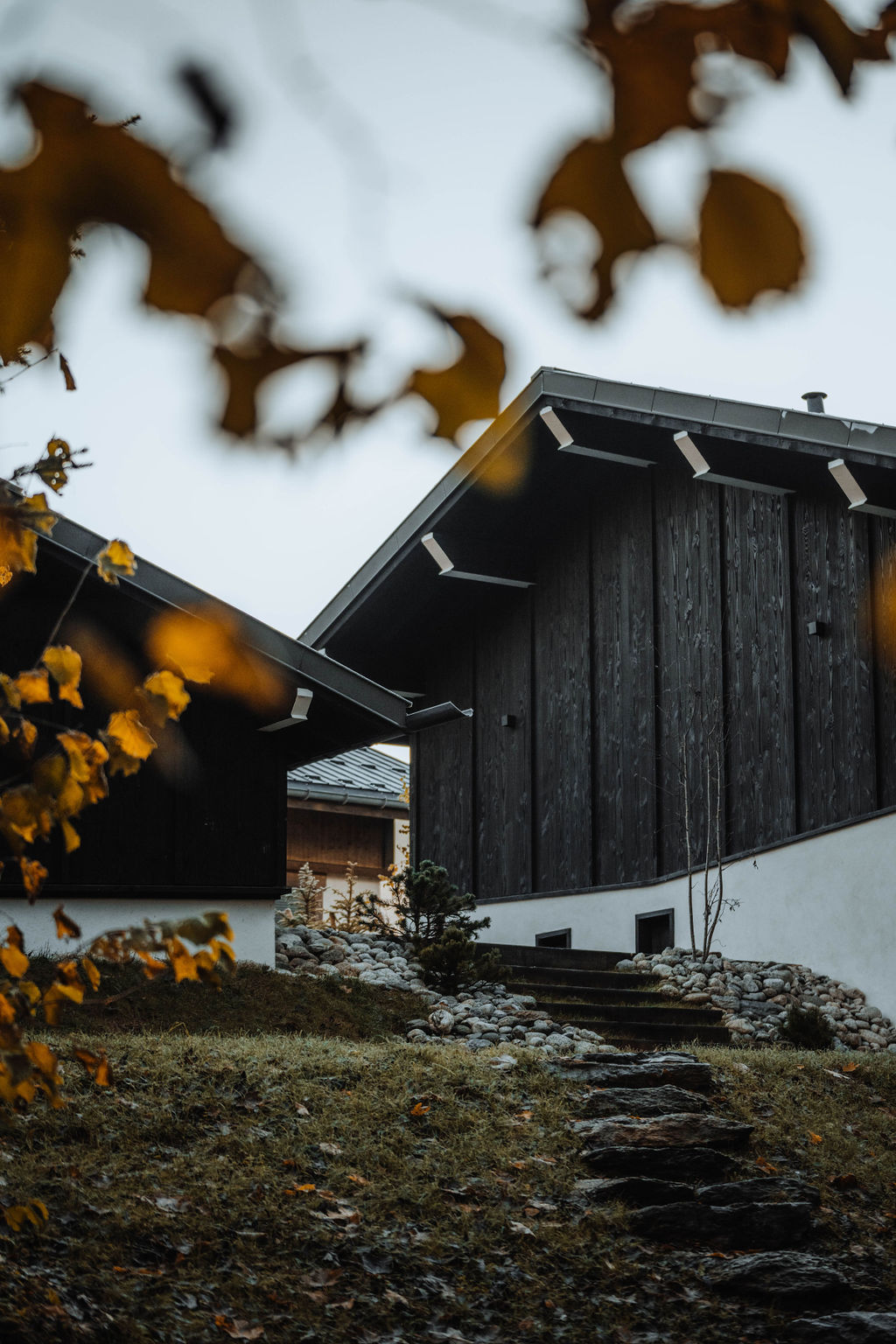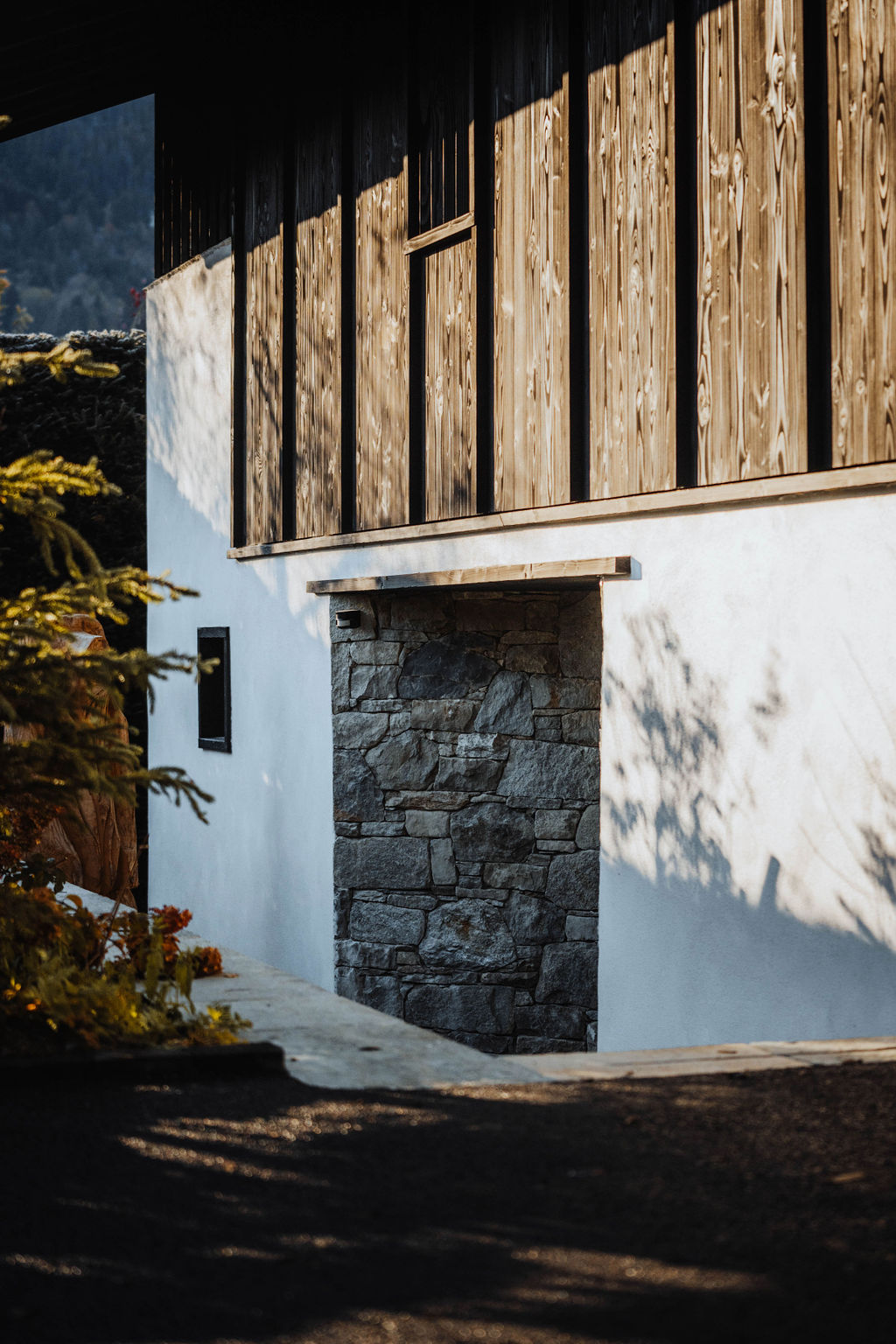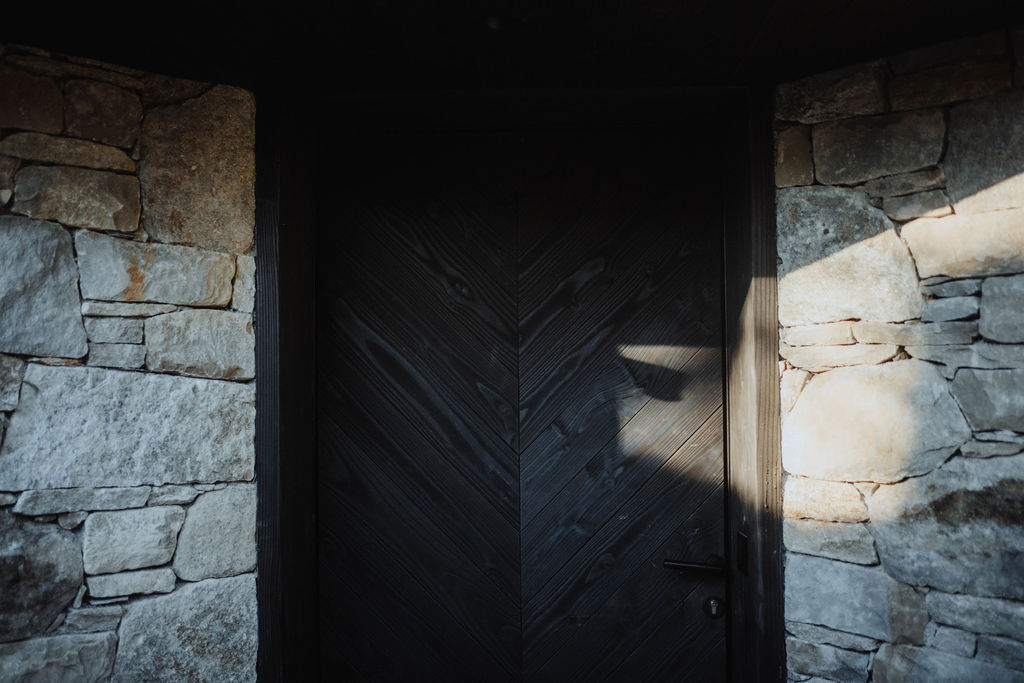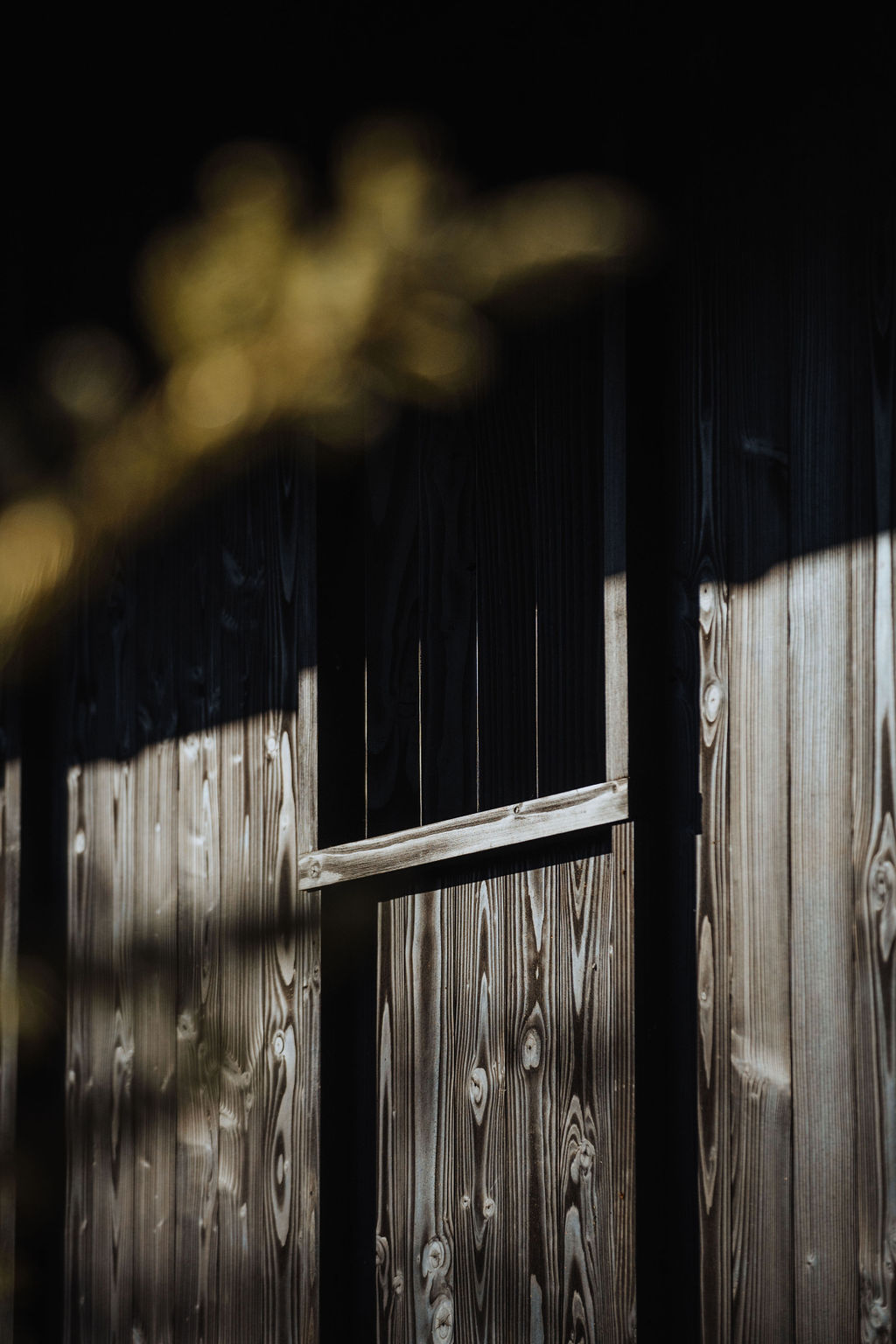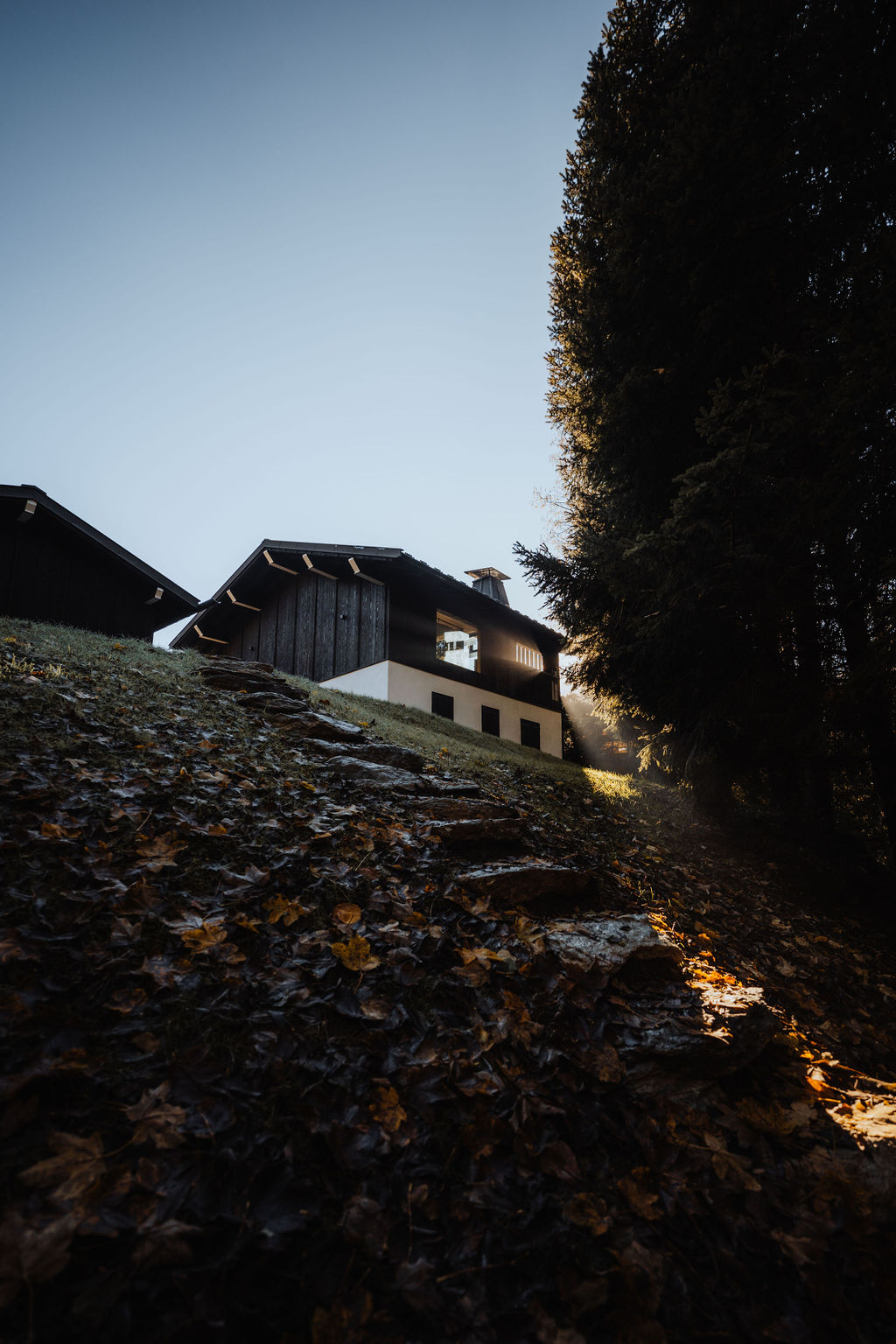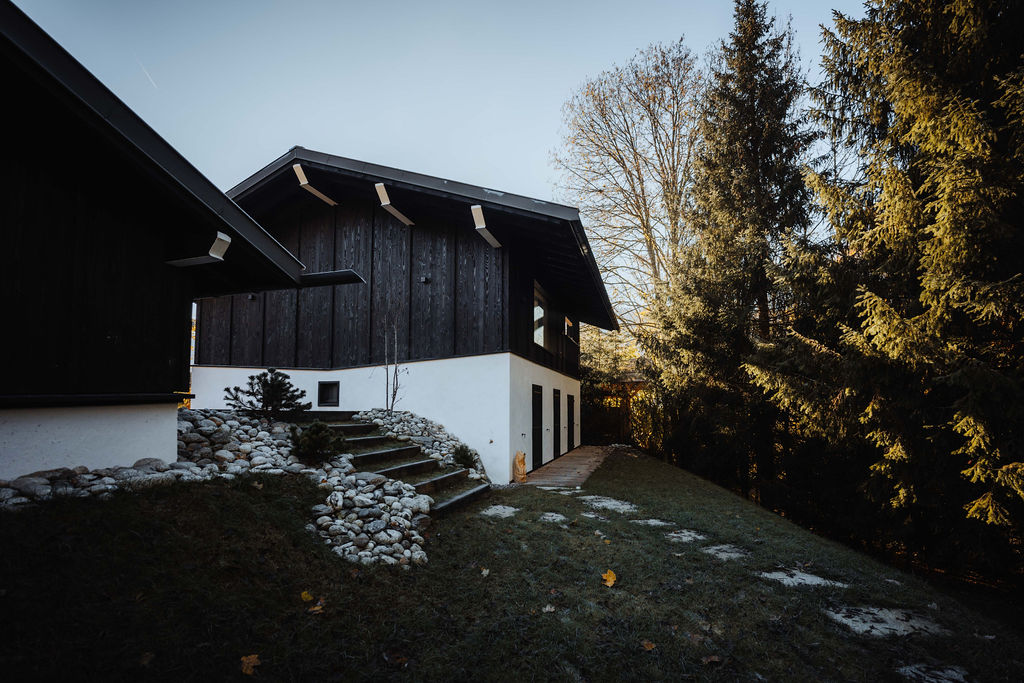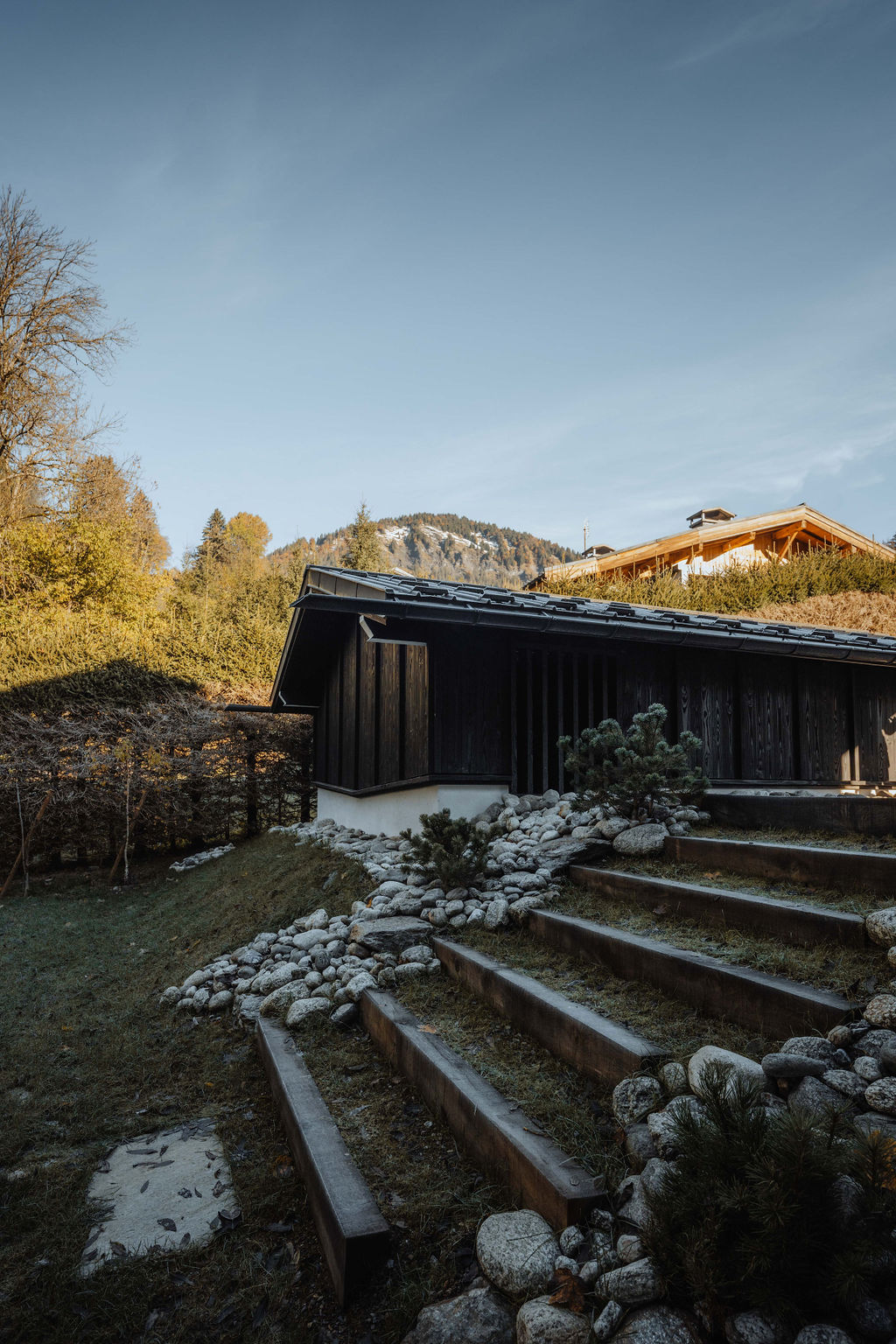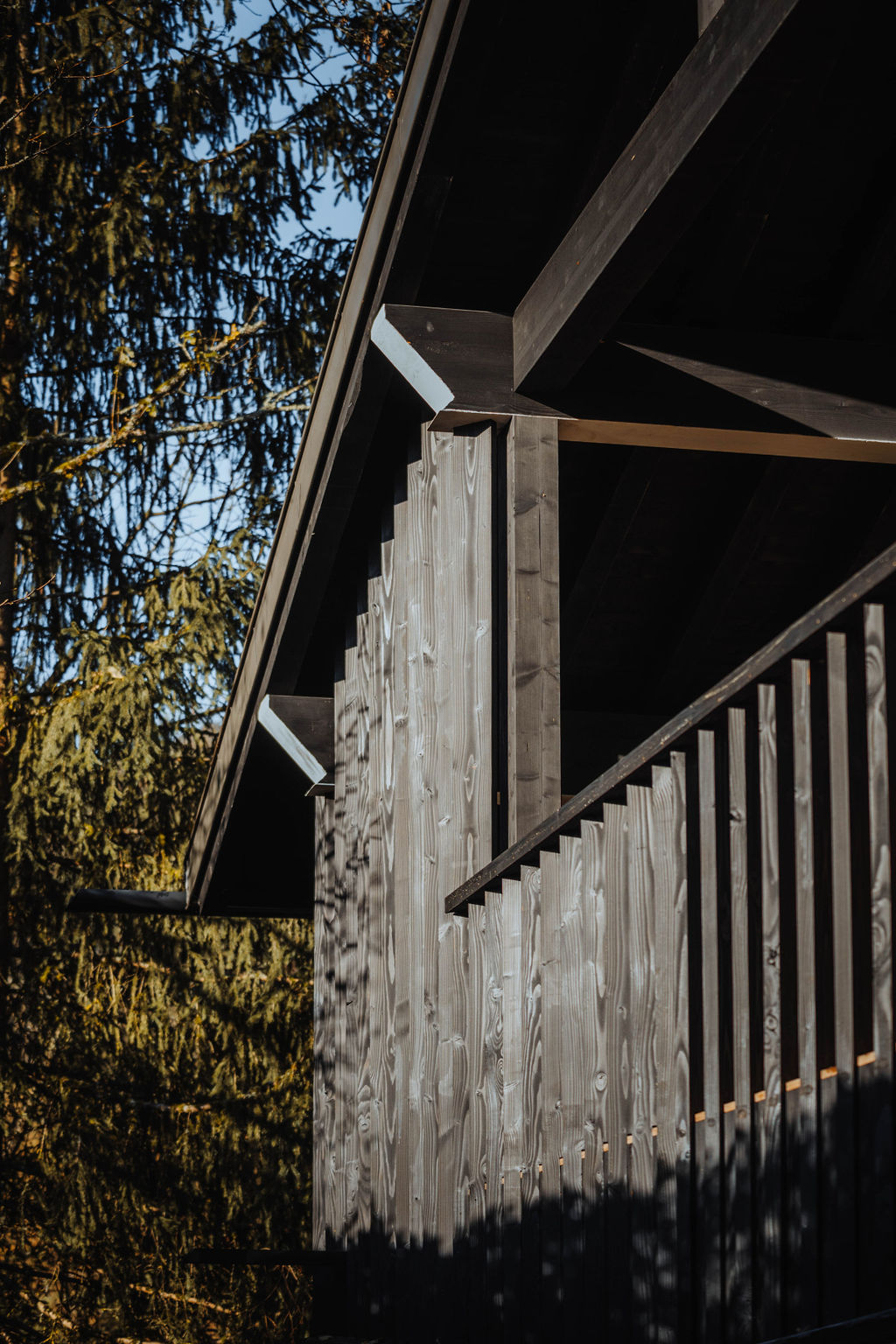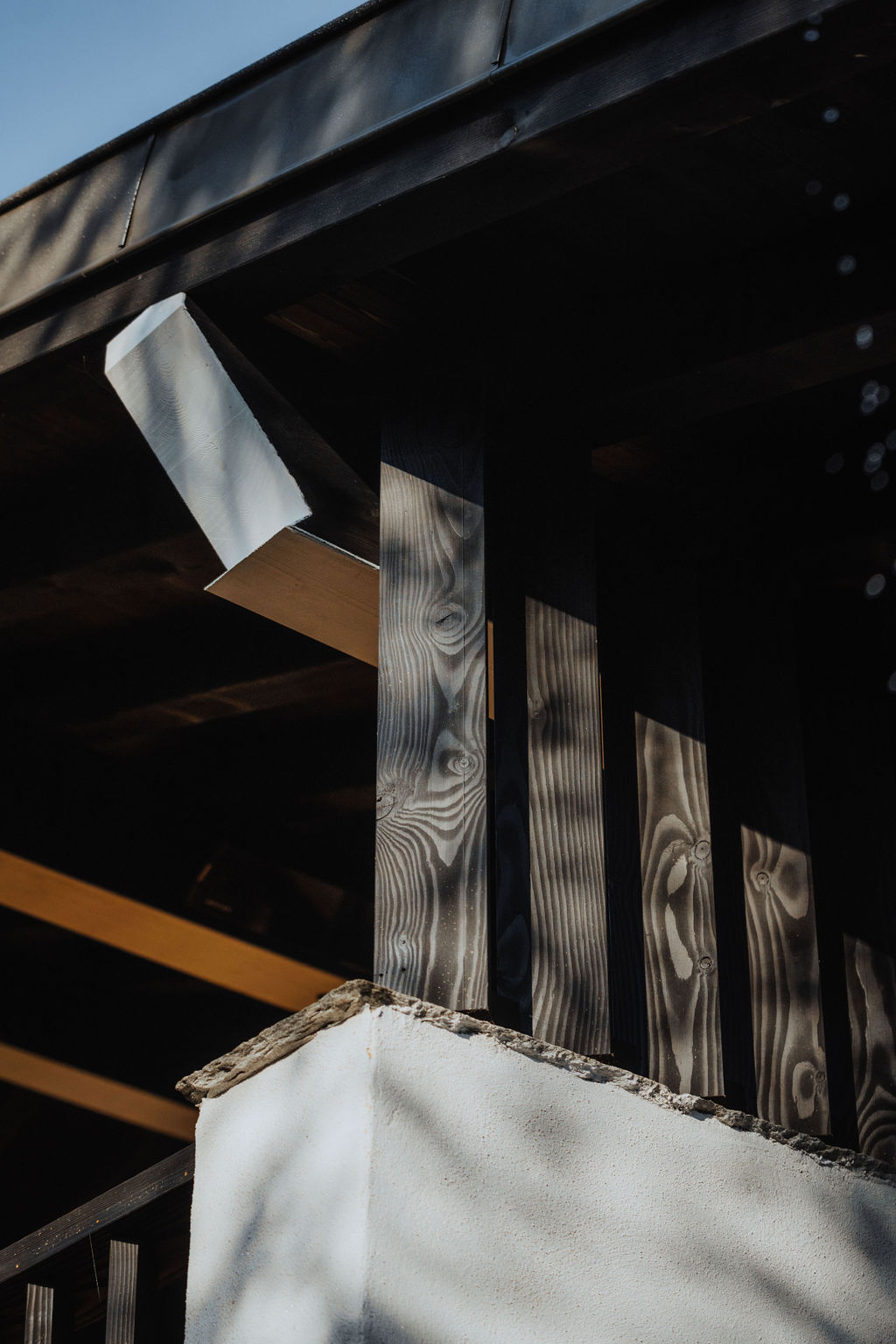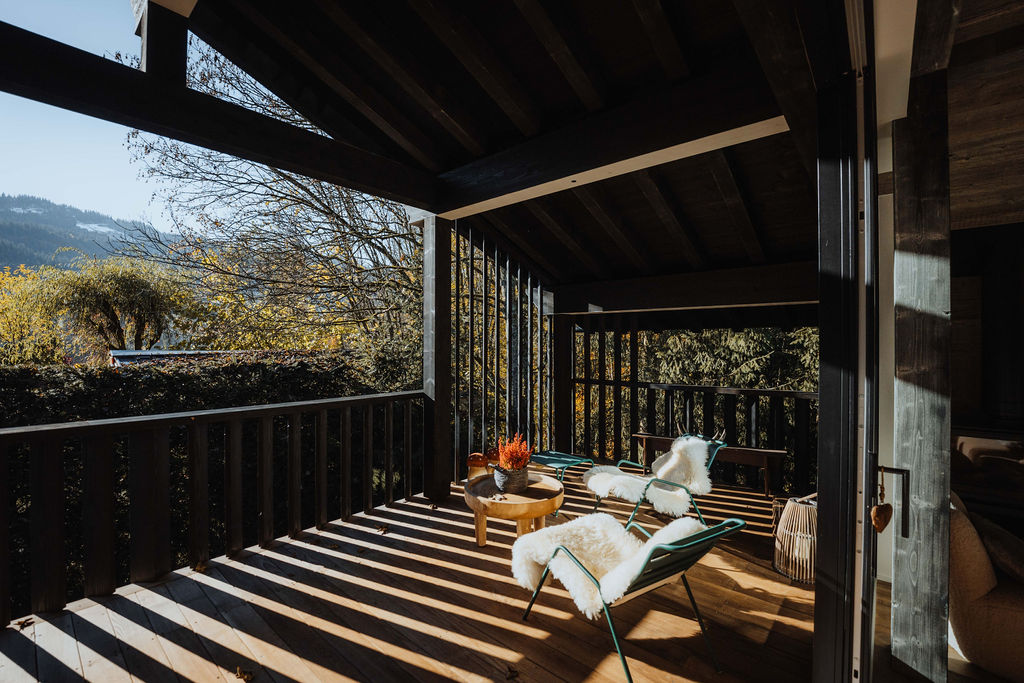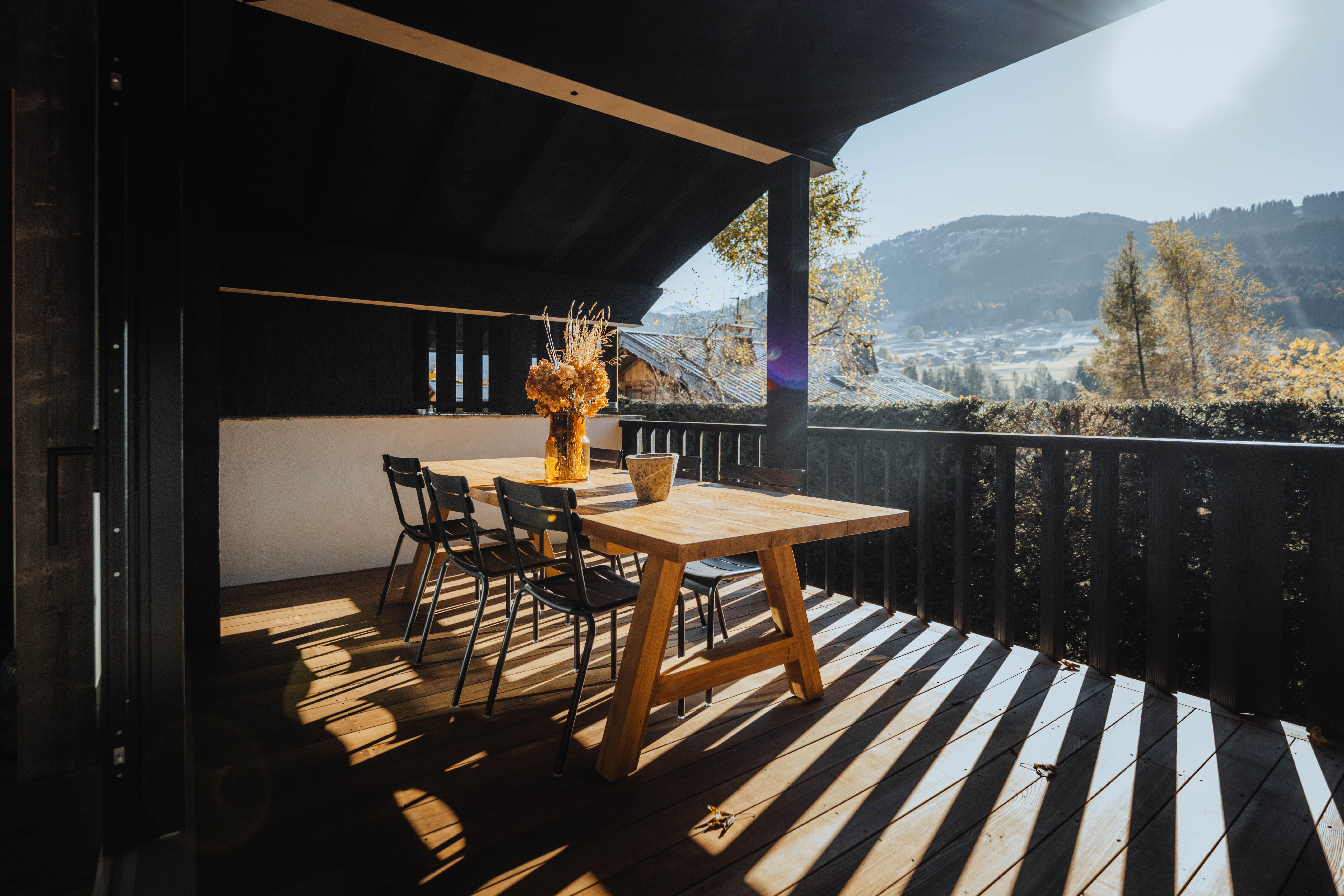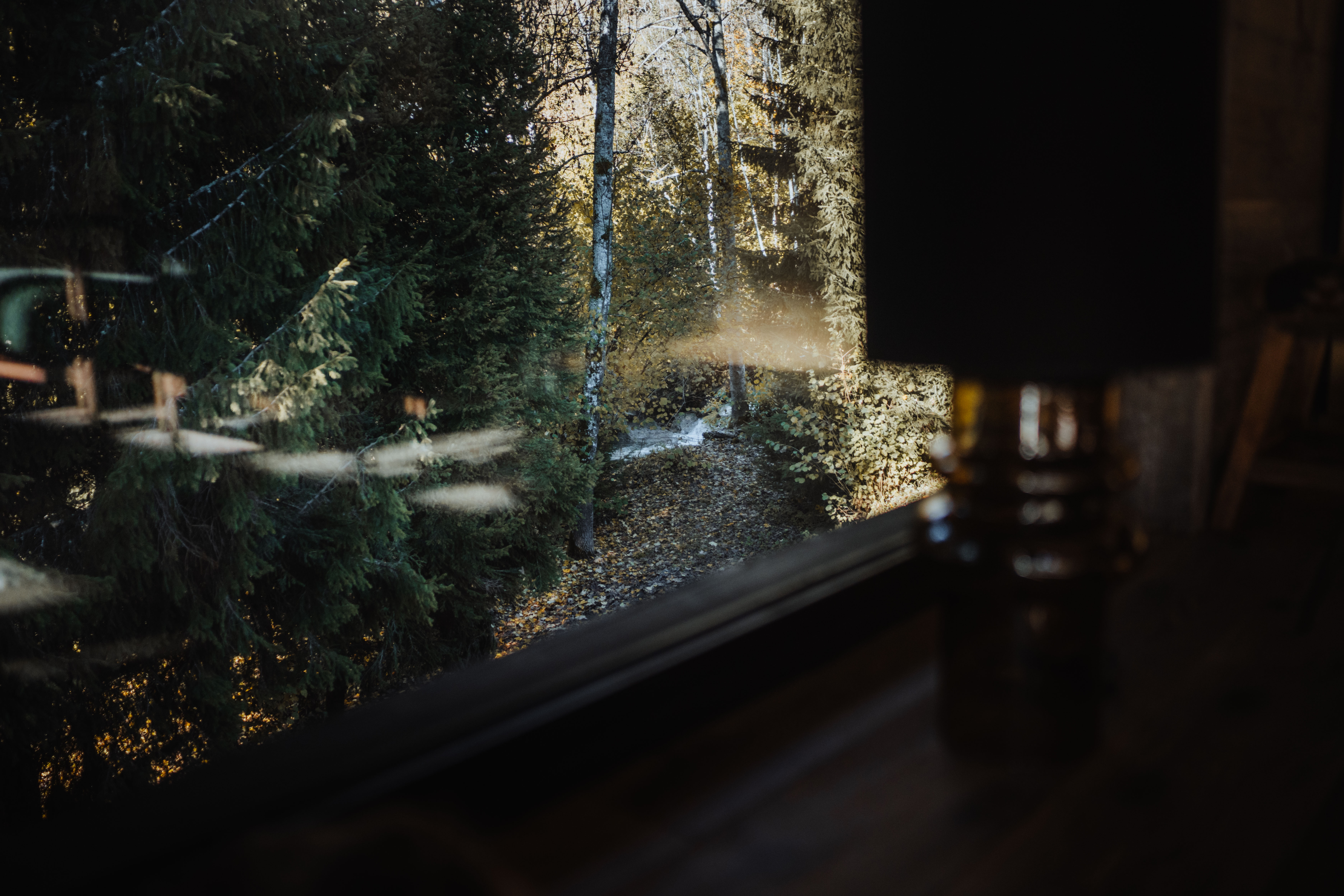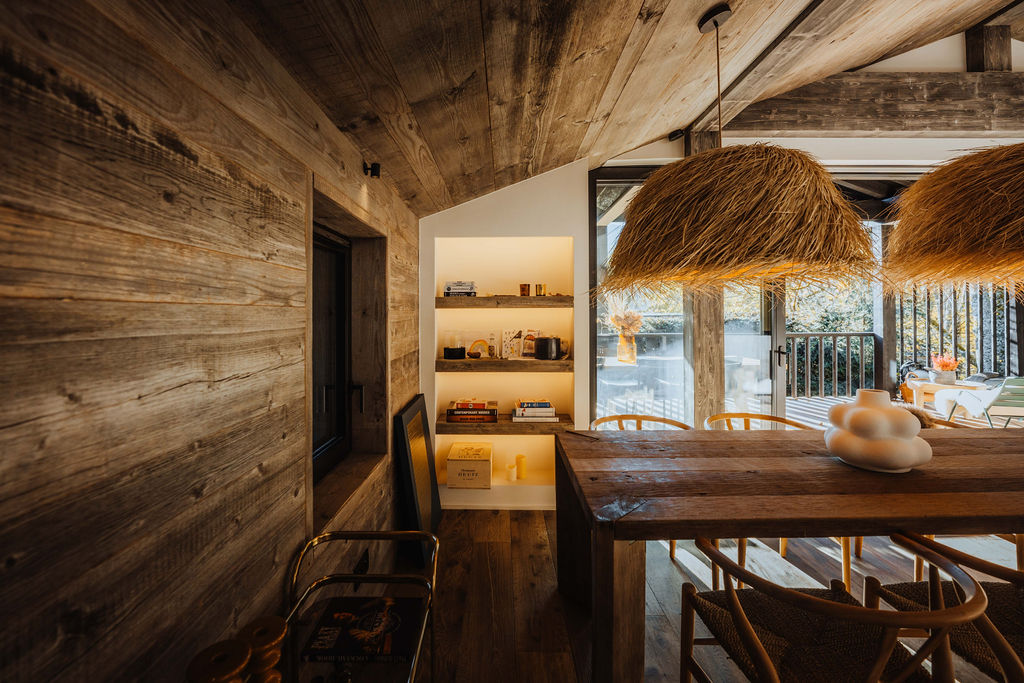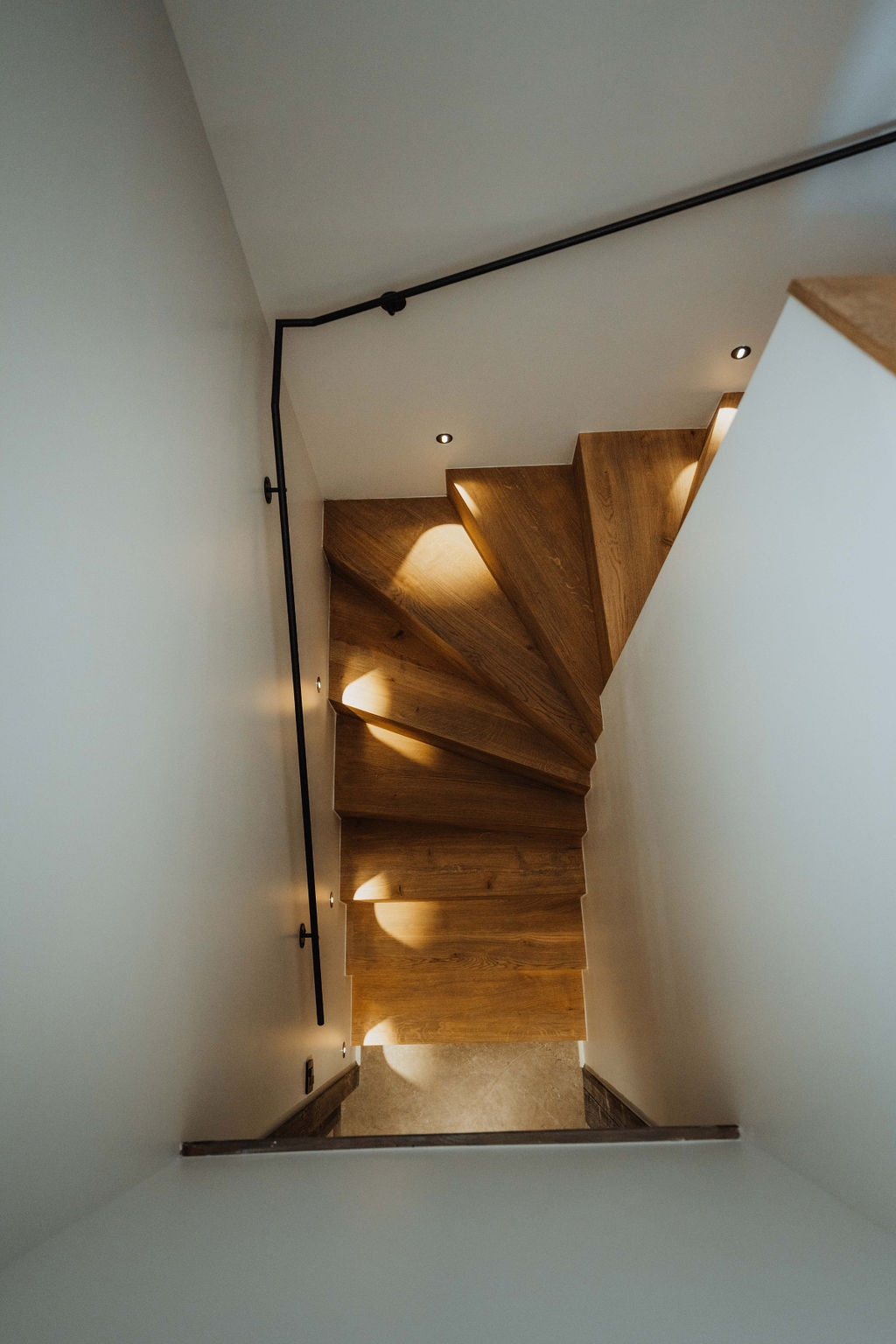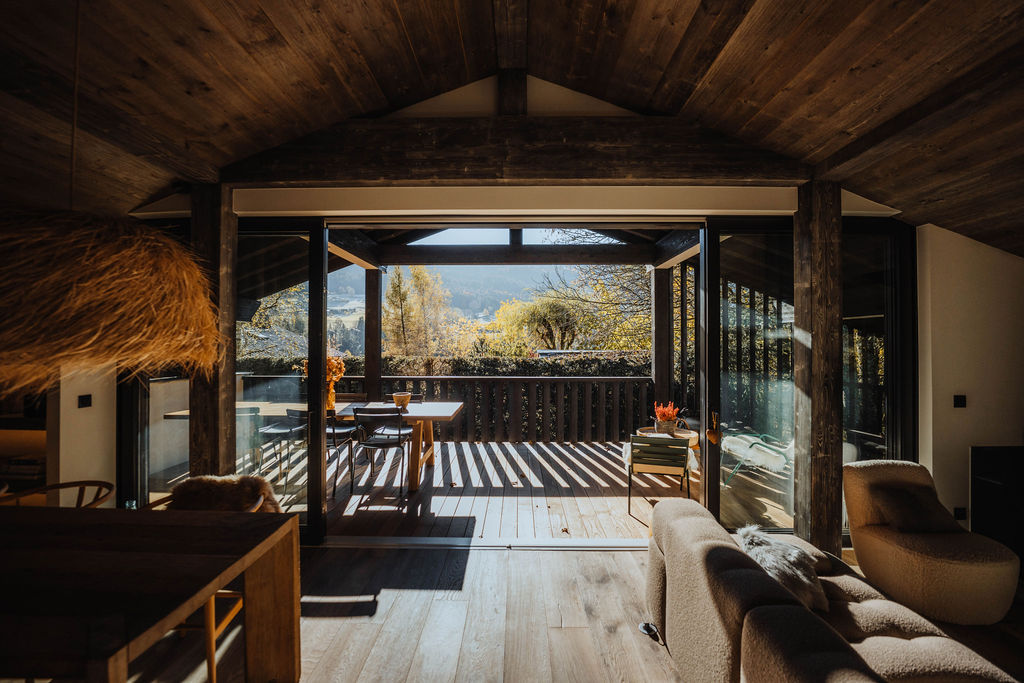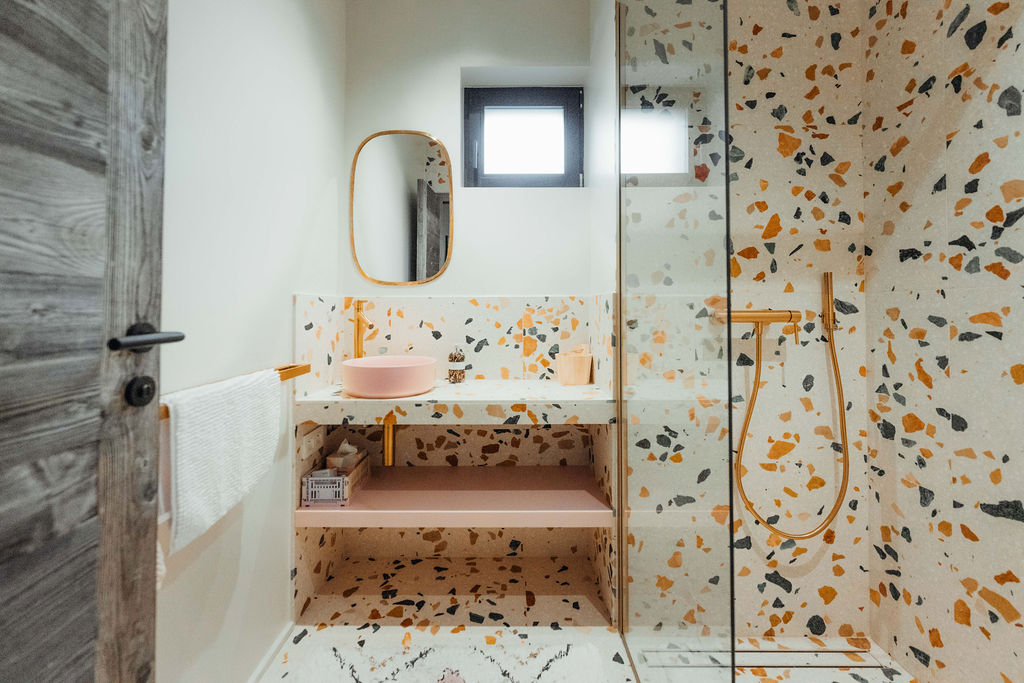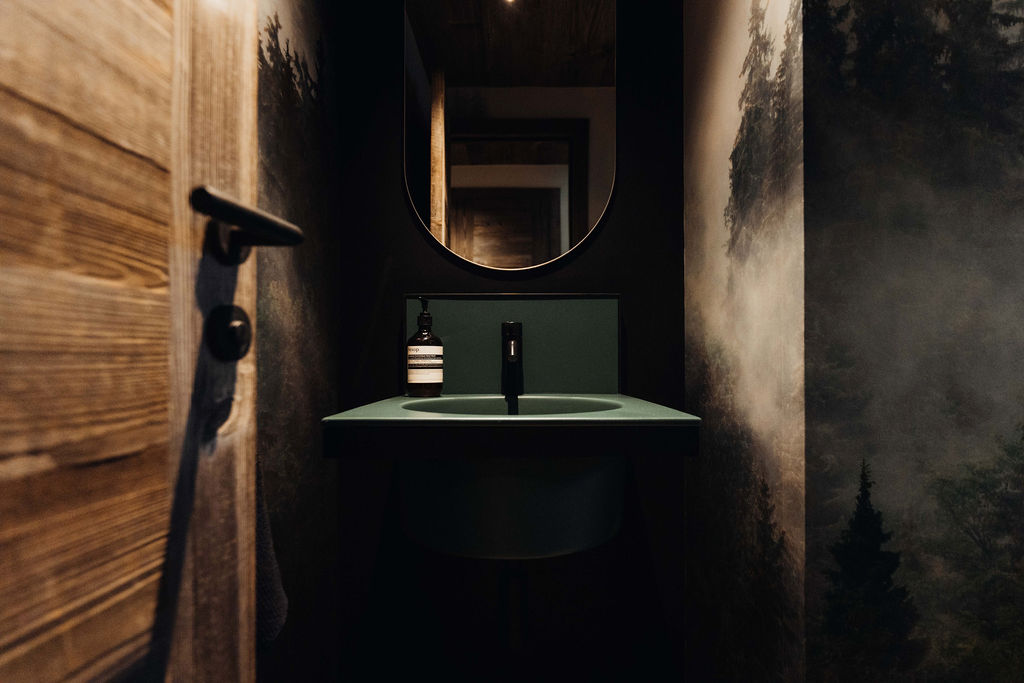Chalet Pipistrelle
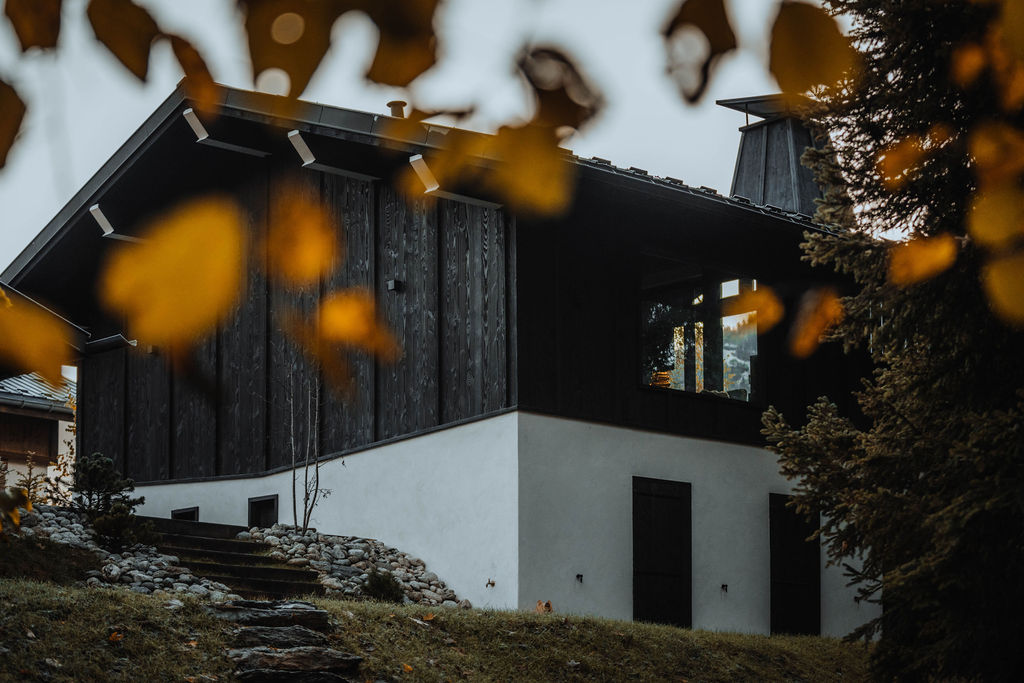
Description du projet
Le projet a pour but l’édification d’un chalet d’habitation. Le chalet est implanté dans le terrain de manière à conserver au maximum la topographie existante. Le site est assez végétalisé, les arbres plantés en bord du ruisseau constituent une ripisylve* qualitative. La philosophie du projet est donc de préserver et de renforcer cet environnement. Le chalet s’implante au Sud-Est en amont, le but de cette implantation est d’optimiser l’ensoleillement afin d’offrir le maximum de confort thermique et de limiter l’ombre portée des sapins se trouvant dans la ripisylve*.
L’accès au chalet se fait par la façade Est. Des escaliers permettent d’accéder à une entrée plus basse que l’aire d’arrivée, hiérarchisant ainsi les espaces et usages. De fait, l’entrée du chalet est protégée de l’espace de manoeuvre et de stationnement. Pour accentuer cette intimité mais également marquer ce passage obligatoire, la façade se creuse pour créer une entrée en recul et abritée. Cette entrée est faite de murs de pierre et d’une porte en bois de la teinte du bardage, à la manière de certaines constructions anciennes. Le dessin de la porte d’entrée est plus sophistiqué que les restes du bardage du chalet. Le mur pierre de l’entrée qui encadre la porte est une réinterprétation des larges cadres en granit ou en pierre entourant les ouvertures de différentes morphologies, souvent observées en Pays du Mont-Blanc et jouant avec l’aspect lisse de l’enduit à la chaux en s’enfonçant dans le mur pour créer des jeux d’ombres, d’angles, de lignes et de matières. La partie basse est minérale avec de petites ouvertures, un peu à l’image des fermes et chalets d’antan. La partie supérieure est, quant à elle, en bardage bois sombre en écho avec les teintes des fermes environnantes afin de créer une relation architecturale avec le bâti le plus ancien sans en être un simulacre. Les pignons reprennent, à la jonction avec le socle minéral, une légère forme en chevron. L’inspiration du chevron est celle de ces portes de bâtisses et de certains mazots que l’on trouve en Val d’Arly mais aussi dans d’autres villages et communes du Pays du Mont-Blanc. Dans les années 1950 et 1960, le bardage en chevrons des pignons fait lui aussi son apparition sur certains chalets que l'on trouve dans le coeur du village de Praz-sur-Arly mais aussi de Megève. L’idée est de faire vivre la tradition constructive et l’esthétique architectural propre au territoire en jouant avec les codes de celle-ci.
Les façades Nord et Est sont peu ouvertes pour offrir aux habitants plus d’intimité. La façade Sud profite à l’étage d’une terrasse s’inscrivant dans le volume de la bâtisse comme l’on pouvait le trouver autre fois avec les « loges ».
Les « loges », « retranchât » ou « Cortna » sont des terrasses couverte de type « loggia » que l’on trouvait sur certaines fermes et constructions traditionnelles du Val d’Arly. Ces terrasses servaient d’espaces de travail extérieurs à l’abri des intempéries et du vent. Elles se trouvent parfois de plain-pied et d’autres fois en étage. Enfin, la façade Ouest s’ouvre sur la ripisylve*, dans le but de révéler un peu plus depuis l’intérieur du chalet un élément fort du paysage.
Le pignon Est donnant face à l’entrée du garage de la propriété est bardé en chevrons à la manière de la porte d’entrée sans en avoir les mêmes dimensions que la porte. L’idée appliquée à cet abri est de reprendre certains composants architecturaux du chalet sans pour autant en être une copie miniature. Il faut visualiser le chalet et annexe comme un ensemble architectural et non comme une succession de bâtiments.
*Ripisylve : fôret boisée, buissonnante ou herbacée, située sur le bord d'un cours d'eau.
The aim of the project is to build a residential chalet. The chalet is located on the site in such a way as to preserve the existing topography as much as possible. The site is quite wooded, with trees planted along the stream forming a high-quality riparian forest*. The philosophy behind the project is therefore to preserve and enhance this environment. The cottage is located on the south-eastern side of the site, upstream, in order to optimise sunlight and provide maximum thermal comfort while limiting the shade cast by the fir trees in the riparian forest*.
Access to the chalet is via the east façade. Stairs lead to an entrance that is lower than the arrival area, thus creating a hierarchy of spaces and uses. As a result, the entrance to the chalet is protected from the manoeuvring and parking area. To accentuate this intimacy but also to mark this obligatory passage, the façade is recessed to create a sheltered entrance. This entrance is made of stone walls and a wooden door in the same colour as the cladding, in the style of certain old buildings. The design of the entrance door is more sophisticated than the remains of the chalet's cladding. The stone wall of the entrance framing the door is a reinterpretation of the wide granite or stone frames surrounding openings of various shapes, often seen in the Mont Blanc region, playing with the smooth appearance of the lime plaster by sinking into the wall to create a play of shadows, angles, lines and materials. The lower part is mineral with small openings, somewhat reminiscent of the farms and chalets of yesteryear. The upper part is clad in dark wood, echoing the colours of the surrounding farms to create an architectural relationship with the older buildings without being a mere imitation. The gables, at the junction with the mineral base, have a slight chevron shape. The chevron was inspired by the doors of buildings and certain mazots found in the Val d'Arly, but also in other villages and towns in the Mont Blanc region. In the 1950s and 1960s, chevron-patterned cladding also appeared on some chalets in the heart of the village of Praz-sur-Arly and in Megève. The idea is to bring the region's building tradition and architectural aesthetic to life by playing with its codes.
The north and east façades are not very open, offering residents more privacy. The south façade benefits from a terrace on the upper floor that is integrated into the volume of the building, as was once common with the ‘loges’.
The ‘loges’, ‘retranchât’ or “Cortna” are covered ‘loggia’-style terraces that were found on some farms and traditional buildings in the Val d'Arly. These terraces were used as outdoor workspaces sheltered from the weather and wind. They are sometimes on the ground floor and sometimes on upper floors. Finally, the west façade opens onto the riparian forest, with the aim of revealing a little more of a striking feature of the landscape from inside the chalet.
The east gable facing the entrance to the property's garage is clad in chevrons in the same style as the front door, but without the same dimensions. The idea behind this shelter is to reuse certain architectural components of the chalet without creating a miniature copy. The chalet and annex should be viewed as an architectural ensemble rather than a succession of buildings.
*Ripisylve: wooded, bushy or herbaceous forest located on the banks of a watercourse.
